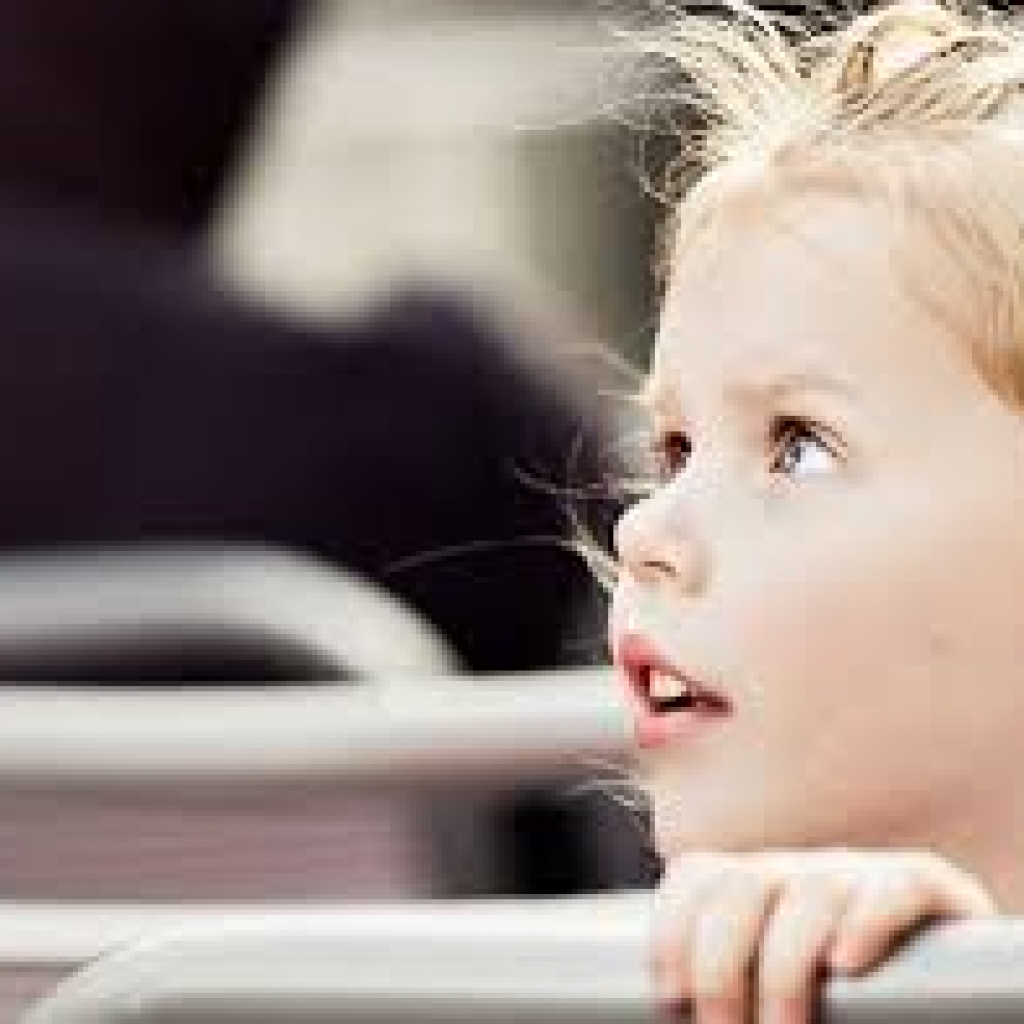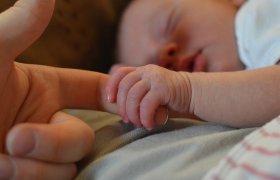Facial Expressions 101: For Kids

Faces and their expressions are one of the first things noticed and studied by children within their first few years of life. Keying on this as a parent, and continuing throughout your child’s adolescence years will make a positive impact on their future communication skills and problem solving skills. Science has found that within a few hours of birth, newborns can tell the difference between their mothers face and strangers faces.
Another study showed newborns to be drawn more to attractive faces than those deemed attractive, most cases the newborns being very giggly and smiley when an attractive face was in or near the room. This is the same with facial expressions, children like positive, attractive facial expressions such as smiling, laughing, making silly faces, ect.
But when you frown, yell, scold, ect., your child will pick that up with negative feeling towards the facial expressions used and can then cause mental blocks associated with those specific facial expressions used. These are just the essential building blocks leading up into further child development later in their life, in this article we will be going over how our own facial expressions affect our children, how we can help as parents with our child understanding facial expressions, and how to determine how your child is feeling through their facial expressions.
Our Facial Expressions
As parents we are the first adults your child will look up to, children are always studying their parents faces, especially facial expression. A sense of reassurance will always occur after a child looks over their shoulder and sees mom smiling back, but if that reassurance is replaced with negativity, a mental blockage can be adapted to cope with the negativity. That’s where the importance of being aware of the possible negatives your facial expressions can have on your own child come in, ensuring you are the loving, supportive and reassuring parent will benefit you and your children massively.

Our own facial expressions are memorized by our children by the first year of life, meaning even as an infant a child is still using your facial expressions to reassure their own feelings. Practicing positivity with and around your child is one way to be sure to be the most positive beneficial parent you can be. For instance, playing with your child once a day, everyday with a big smile and fun attitude is a great way to put a good positive impression on your child at any age. Removing yourself from your children when you are in a more negative mood will guarantee you time to cool down, as well as keep your children out of the negative atmosphere ensuring the minimum amount of stress and negativity in their lives.
Another activity that shows younger children positive facial expressions is actually taking selfies, honestly this is an amazing activity for little girls and boys. Just open up snapchat or your front facing camera and smile! Encourage your little one to smile with you, do this especially when they are in a crabby mood, you can also use this to practice learning different emotions by mimicking them together with your child. There are so many fun ways to work with your child when they are learning facial expressions and establishing positive family facial expressions, explore even more with this next section.
How We Can Help
In all reality, starting these activities after your child is born is the best way to help as a parent, but most of us are a couple years past that time in our lives. These activities can work for almost any age child, it is never too late to start teaching positive facial expression reading skills . Based on multiple research studies, here is a list of the best activities to do with your child compiled by us.
Card Game
There are children’s playing cards with all of the different emotions pictured and written out, using different games such as go fish, memory games, and slapjack you can create fun facial expression games to practice the positive benefits and learning opportunity. While playing these games, explain what each emotion means and why someone might have that certain emotion. Once the child catches on, try different variations and challenges to really stretch their mind and ensure full comprehension.
Movie Night
Although this activity doesn’t sound that beneficial, believe us it is. Using any of the children’s movies out now or older Disney movies, watch the entire movie with your child. Ask them to write down or tell you what emotion each character is feeling through the movie, ask them why they feel this emotion and what facial expression showed this. This can be turned into a wide array of different games and quizzes. This is an awesome activity in our book, especially when you can pair it with the new movie inside out, highlighting emotions at its fullest.
Paper Plate Emotion Spinner
Inexpensive and easy, an emotion spinner is a great way to teach the different emotions and identify what emotion your child is feeling. Consisting of a paper plate and paper clip, you create 8 circles with each emotion and an appropriate color to go along with the emotion . Using the plate like a board game spinner have your child act out the chosen emotion and identify their own emotions. This project can be manipulated into however you feel best for the development of your child, don’t be shy get creative.
Build a face stones
Remember mr potato head? This is the same concept but with rocks, very fun for the parent as well as child. Start by painting entire rocks with a facial piece, such as an eyeball, nose, mouth, ect. Line up all the different facial pieces and have you and your child design faces that are mad, sad, happy, and more. This is a fun way to show the difference between each emotion and feeling.
Feeling Center
Setting up a feelings center in your home is an easy and beneficial way to encourage your child to explore their own emotions. The concept is simple, a small little nook in the corner with a ground level mirror, stuffed animals and characters with different facial expressions, and emotion related books that promote emotional education.
Explain what the feeling center is to your children and let them know it is ok to use it for exploring their emotions and coping with stress. Not ever feeling center needs to be the same, you can add a painting easel and beanbags, you could leave an interactive toy, it’s all up to you as the parent.
Identifying your child’s facial expressions
From birth to age 2, children are all known to do the same group of facial expressions to identify their emotions. Identifying these emotions and carefully catering to them will benefit in the long run. We have compiled information from multiple studies to give you the best guide to identifying a child’s emotions through facial expression.
Distress
If a child is distressed it is quite easy to tell if you look at their facial expressions. Most often the corners of the child’s mouth will be turning down, with arched eyebrows and a quivered chin. Not always crying, but the distress can be seen in big watery eyes and a simple distressed tone in their cries. This is a pretty easy sign to notice, but if you don’t act fast that distress could turn into a meltdown.
Fear
When a child is scared and is showing fear, most of the time their eyes will be frozen wide open. Along with the frozen eyes, their hands and face will tremble followed by a cry or dead silence. Almost anything can scare a young child, the important thing to do if you notice your child in fear is to comfort them and let them know they are safe.
Anger
Anger in children is often seen with the same signs, a red face, squinted eyes, and a violent nature (hitting or pushing away). Anger is the same as fear when it comes to needing comfort, but you might have to let your child calm down a little bit before before establishing the comfort.
Boredom
Constant eye contact and needing of your attention are key signs of a child being bored. The child will do this by throwing toys, crying, and yelling, often laughing when you react. When you notice this, start engaging with your child in new ways, that way your child will take longer to get bored.
Joy
When your child is happy they will have a huge grin on their face most everytime. Their cheeks will be lifted and red, while the corners of their eyes wrinkle with joy. They might just goo or babble with giggling, just let them have some fun no need to interrupt such cute sounds.
Fascination
When their eyes go huge and zoom in on a certain object with that one look of awh, that is fascination within a small child. At this point the child may lift their eyebrows and open their mouth, squealing or pointing at what they are witnessing. You can go over an embrace this sight with them, they will probably squeal with joy.

Emotions play a big role in our culture as human being, and as children these essential learning curves are needed to establish a healthy and positive cognitive function in the brain. Encouraging the use of emotional games and activities into the youth of today can have large benefits later down the road. Making sure that your children are educated and prepared for the world through communication is key to ensuring a successful life in your child’s future.







